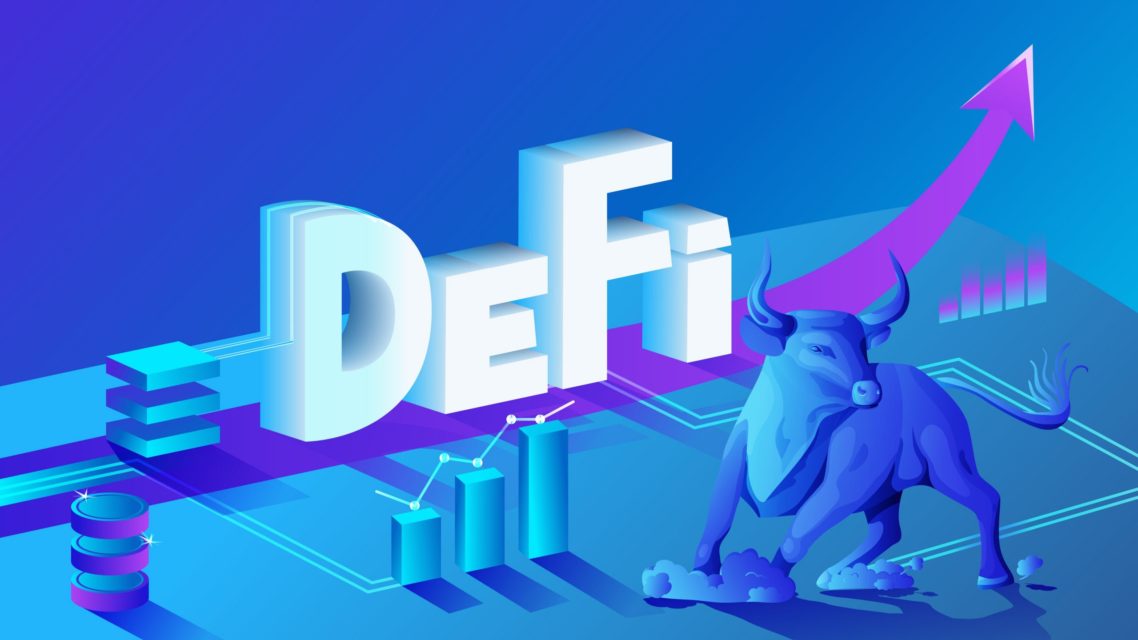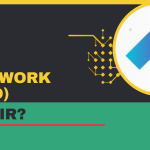As the world continues to witness the rise of cryptocurrency, there is no shortage of eye-catching projects that will define the future of decentralized finance. Every serious investor should keep an eye on eleven groundbreaking projects that are currently vastly undervalued. A spike in crypto prices will likely push these projects into a record-breaking frenzy.
What is DeFi 2.0?
DeFi 2.0 is a series of decentralized financial projects that seek to enhance the original DeFi concept by making financial assets more accessible, profitable and less risky.
Transition from DeFi to DeFi 2.0
The idea behind DeFi is to provide financial services to everyone without the typical restrictions imposed by banks and relevant financial intermediaries.
Also known as DeFi 1.0, it aims to support financing activities similar to a traditional bank, but without the lengthy paperwork and scrutiny. Instead of going to the bank and following strict compliance rules, anyone can access a DeFi 1.0 platform to get loans, lend money, and buy insurance from a P2P platform.
However, DeFi 1.0 has had its fair share of challenges. For example, the highly volatile crypto market poses a risk to liquidity providers. Similarly, the self-regulation function of the smart contract has proven to be risky because there is nothing that can be done if funds are stolen. Higher gas fees due to scalability issues mean that service providers often offer slow and extensive services.
DeFi 2.0 is the answer to these shortcomings. Today’s top DeFi 2.0 projects handle liquidity through cross-chain bridges connecting blockchains, providing sufficient liquidity for each asset. Likewise, open source communities oversee audits of smart contracts, so smart contracts are protected by insurance. In the past, users needed large collateral to get loans. Now, the loans are self-paying, as yield farming is used to pay off the balance.
The solutions offered by DeFi 2.0 are of course not limited to these. Many new DeFi 2.0 projects have emerged in the last two years. Each of these projects aims to solve one or more fundamental problems. Despite innovation and technology, finding the best DeFi 2.0 projects to invest in can be difficult.
How to Find Upcoming DeFi 2.0 Projects
There are many ways to invest in an upcoming DeFi 2.0 project. In the long run, purchasing DeFi 2.0 tokens is perhaps the easiest way to capture value. Some investors also opt for yield farming, liquidity mining and staking for a quick return. In addition, websites like DefiLlama offer critical information on many upcoming Defi projects, making it the fastest method to collect gold bars from a potentially endless list of investment opportunities.
Despite the numerous opportunities in the DeFi space, not every DeFi project is a winner. Finding the best DeFi 2.0 project can be a difficult task.
Fortunately, there are several meaningful indicators that can help traders spot such winners. When deciding whether to invest or not, keep these five key criteria in mind when searching for the best DeFi 2.0 projects.
Basic Dynamics that are Easy to Understand
The best DeFi 2.0 projects to attract investors provide a fluid overview of a project’s goals, usage, and references. A cluttered user interface, industry jargon, and lack of knowledge no longer serve the purpose. Therefore, a neat interface and a useful web page are essential for successful promotion.
Active Community
No DeFi project can be successful without an active community. The community is the driving force behind the entire ecosystem. Helps keep the project transparent by overseeing governance protocols, future opportunities, and user experience.
Enterprise Strong Support
Look for signs of institutional support before investing. The best Defi 2.0 projects are backed by corporate-grade funding. Availability of funds allows developers to implement their ideas and try new protocols. The funding also keeps everyone involved through regular incentives and offerings.
Controls to Prevent Hacks
Hackers regularly target smart protocols to destabilize a project. If a DeFi project can’t fix software problems, it’s at the mercy of hackers. Therefore, read the security review carefully. A good DeFi project does security testing and completes its audit before listing its smart contracts.
Healthy Tokenomics
Tokenomics provides an overview of all the factors that make a DeFi 2.0 token attractive to investors. These statistics are a metric that allows investors to gauge the health of a DeFi project and its assets. Project utility, supply and price stability mechanisms, distribution of cryptocurrencies and governance are the main indicators of a healthy DeFi 2.0 project.

Best DeFi 2.0 Projects
Here are some of the best DeFi 2.0 projects to invest in:
- Rari Capital: aims to make DeFi finance accessible to ordinary people without a technology background.
- Convex Finance: Helps investors and liquidity providers earn higher rewards compared to the current market.
- Uquid: Designed to offer contactless crypto payments to users around the world.
- Synapse: A DEX that offers liquidity to traders and networks seeking additional liquidity.
- Rarible: An open source protocol for developers to easily create and advertise NFTs.
- Tokemak: An aggregator that gives users the ability to provide liquidity to DEX and DeFi platforms while earning returns.
- Frax Protocol: It aims to introduce a highly scalable and decentralized asset that can overcome the shortcomings associated with fixed-source digital assets such as BTC.
- Abracadabra: Allows investors to borrow MIM without using their interest-bearing tokens.
- Algorand: Aims to solve problems of decentralization, speed, and scale.
- The Graph: A decentralized protocol for querying and indexing data from blockchains.
Rari Capital (RGT)
Rari Capital is a forward-looking DeFi 2.0 project that aims to make the benefits of DeFi accessible to people with no technical background. It greatly simplifies investment activities such as lending, borrowing and yield farming.
Using the platform, developers can automate their bidding so they can focus on developing software protocols instead of wasting unnecessary time on advertisements.
Currently, the RGT DeFi 2.0 token is trading around $14 and there are already speculations that it could reach the $100 milestone as early as 2023.
The group’s Fuse offering is just one example of the many innovative products that need to keep the ball rolling. Fuse is an open interest rate protocol that facilitates the creation of permissionless borrowing and lending pools.
Overall, a vibrant community, strong investment and continuous innovation make it a standout project for long-term investment.
Convex Finance (CVX)
Convex Finance is a well-established DeFi 2.0 project that helps investors and liquidity providers earn higher rewards compared to the current market.
Building on Curve Finance, which is known for its efficient stablecoin rates, Convex Finance has high liquidity thanks to the incentive mechanism it shares with its stakeholders and liquidity providers.
The heuristic model allows any stakeholder to receive the maximum reward increase, regardless of the number of tokens. It does this by encouraging everyone to pool their assets and convert them into veCRV. Similarly, liquidity providers can participate in a variety of revenue streams, including the base interest rate, a portion of Curve Finance’s platform trading fee, Convex-enhanced CRV rewards, and liquidity mining.
Convex Finance has become a major player in the DeFi 2.0 scene. Investing in CVX DeFi 2.0 cryptocurrencies has huge upside potential as almost every analyst is optimistic about the prospect.
Uquid (UQC)
UQC is among the DeFi 2.0 cryptocurrencies built on the ERC-20 mechanism. Its main purpose is to support the growth of the UQUID network, designed to offer contactless crypto payments to users worldwide. Much like the best crypto credit and debit cards on the market, the UQUID card initiative aims to be the first prepaid card to support 100+ cryptocurrencies.
Since the launch of the project, it has received support from almost all major crypto platforms. Its utility is further enhanced by the fact that the card can be used in real-life settings. Cardholders can easily convert crypto to paper money and withdraw it from various places.
The card is already on multiple cryptocurrency platforms. The ability to convert virtual currencies to paper currencies is a huge incentive for developers. Overall, UQC has great potential. Future collaborations and innovations will likely increase both user numbers and wider adoption.
Synapse (SYN)
Synapse is a cross-chain decentralized exchange that offers liquidity to traders and networks seeking additional liquidity.
The use of liquidity pools offered by Synapse is game-changing for many startups that are hampered by illiquid markets. These liquidity pools are open to everyone. Automated market maker models and peer-to-peer contract structure ensure there is sufficient liquidity to house even the smallest assets.
Synapse also has a thriving DeFi ecosystem. Unlike many other platforms, Synapse supports easy embedding. Since there is no AML or KYC regulation, anyone can connect an e-wallet and start earning from various investment opportunities. This open market structure also encourages participants to purchase financial services without scrutiny.
Synapse management is actively working to develop a proof-of-stake blockchain that will help validators share SYN to secure the network. A solid investment backed by infrastructure-enhancing services and more than 100 success-driven solutions make Synapse a DEX to watch for next year.
Rarible (RARI)
Rarible is a popular NFT marketplace powered by a broad ecosystem of NFT creation, storage and trading.
Rarible’s goal is to provide an open source protocol where developers can easily create and advertise NFTs. Among the most notable features is locked content. Using this feature, developers can offer NFT collectors a highly immersive experience. The unlock allows NFT owners to receive high resolution files, watch behind-the-scenes videos, receive exclusive deals and attend members-only events.
The Rarible platform is a great place to find rare NFT art. The interface can sort NFTs by price, features, popularity, value, and other criteria. Besides NFTs, investors can earn rewards using liquidity mining.
Management is actively trying to allocate more funds to next generation Web3 projects. These projects will build on the Rarible protocol to support and expand the existing ecosystem beyond the NFT domain.
Since its launch, the project has helped thousands of creators enter the NFT space without any coding. Alongside the popular NFT market, the proposed projects will likely increase the value of RARI DeFi 2.0 tokens in 2022.
Tokemak (TOKE)
Tokemak is a crypto liquidity aggregator for decentralized exchanges. It gives users the ability to provide liquidity to DEX and DeFi platforms while generating returns.
The framework was developed to overcome shortcomings in market maker systems. The traditional market-making model can be inefficient, unpredictable, and costly, resulting in high costs and reliance on large cryptocurrency holders. Tokemak provides users with cheaper, more efficient and transparent liquidity by solving the liquidity problem by utilizing several components.
Users can decide where and how to provide liquidity using Tokemak. In return, they are rewarded for their efforts with incentivized stock returns. Efforts to integrate the TOKE token into the DAO governance structure are currently underway. TOKE’s role will continue to expand in the future.
While the concept of outsourcing liquidity to a third party is not new, it is a strong incentive for participants in the burgeoning crypto ecosystem. If Tokemak management plays its cards right, the project can quickly reach maturity, allowing all liquidity flows to flow through its platform. Perhaps this alone is a strong incentive for investors to keep Tokemak on their radar.
Frax Protocol (FXS)
Frax Protocol introduced the first fractional-algorithmic stablecoin. Unlike many other stablecoins, FXS DeFi 2.0 tokens vary in supply and demand. The ultimate goal of the system is to offer a highly scalable, decentralized asset that can overcome the shortcomings associated with fixed-source digital assets like BTC.
To achieve its goal, the protocol relies on the world’s first fractional-algorithmic model to keep its value stable at around $1. For example, if the stablecoin is trading above $1, the algorithm lowers the margin rate and vice versa.
Prior to FRAX, stablecoins were divided into three different categories: fiat-backed, cryptocurrency-over-collateralized, and unsecured algorithmic. However, the introduction of the new model provided stakeholders with a new paradigm to test.
With possible cross-chain applications in the future, it’s time to consider adding it to the portfolio.
Abracadabra (SPELL)
Abracadabra allows users to borrow interest-bearing assets as collateral to borrow Magic Internet Money (MIM), a stablecoin that can be used on multiple blockchains. It is a lending protocol that allows
The concept allows investors to borrow MIM without using interest-bearing tokens. As a result of this unique setup, investors can free up liquidity using tokens and MIM to increase their income.
According to its founders, Abracadabra is a direct competitor to other stablecoins. As DeFi 2.0 cryptocurrencies like DAI are secured by a central stablecoin, most current stablecoins have lost their shine. Abracadabra solves this paradigm by investing illiquid interest-bearing tokens to issue a liquid asset, MIM. Abracadabra has SPELL, a utility and management token, as well as MIM.
One of the most innovative products of this DeFi project is a multi-chain yield optimization platform.
Currently, the main goal of the community is to develop a protocol that can optimize the provision of liquidity across all decentralized exchanges and blockchains. The ultimate goal is to leverage liquidity provisioning in Popsicle Finance using Abracadabra.
The roadmap for the future looks bright as the team behind Abracadabra seeks to automate purges by creating more utilities for MIM. There are also several plans to expand the project to more chains supported by strong communities. Investors may want to jump on the bandwagon before Abracadabra becomes the largest decentralized stablecoin in the crypto space.
Algorand (ALGO)
Since its launch in 2019, Algorand remains one of the most attractive investment options in the crypto world. The project seeks to solve problems of decentralization, speed and scale. It does this by providing infrastructure and tools that developers can use to build applications and assets.
Theoretically, Algorand uses Byzantine consensus to allow anyone to participate in the proof-of-stake mechanism. It also means that participants can only participate by keeping money in their wallets. The project receives guidance from a well-known team of experts. One of the team members recently won a Nobel Prize for his contribution to the field of economics.
Algorand is a pure proof-of-stake blockchain cryptocurrency protocol that allows it to complete transactions in just five seconds. Accordingly, it is easy to transact and the transaction fee is among the lowest in the industry.
More than 500 companies are currently using Algorand technology. A strong team, growing community, deep-rooted partnerships, and the development of a gamification system will likely keep investors and analysts alert. A solid project with the potential to deliver significant returns in 2022 and beyond
The Graph (GRT)
The Graph is a decentralized protocol for querying and indexing data from blockchains. It works like Google does to index useful information from various blockchains.
Previously, it indexed content on Ethereum. However, it currently works on various well-known blockchains that are not compatible with Ethereum. The Graph’s most useful feature is its ability to access useful data to run and run DEXs more efficiently.
Today, The Graph has established itself as one of the critical components of DeFi 2.0 infrastructure. Data can be transformed, organized and shared between applications. Since its launch in 2020, The Graph has already surpassed one billion queries.
Various DApps have already deployed more than 1,700 subgraphs. The subgroup may consist of a global chart that will eventually contain all of the world’s public information. If the crypto space continues to gain traction, there is little doubt that Graph will be at the forefront of DeFi 2.0 projects.
Final Words
The future of crypto will be defined by the improvements delivered by the best DeFi 2.0 projects. Even a small price recovery in the crypto markets can cause a surprising increase in the value of the underlying tokens. Therefore, ignoring these projects may be missing an opportunity for substantial profits for the foreseeable future.





